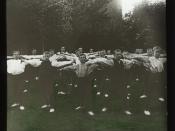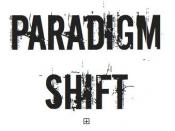This day in age there has been a progressive increase of people being overweight. This is not something new, however little change has occurred to counteract this downward spiral. The health industry is a multibillion dollar industry but not because people are eager to join the local gym, this was the result of people wanting to find the easy way to lose weight. Prime examples would be the diet pills advertised everyday during the late night hours or the famous thighmaster, this list would not be complete without the historical ab-exerciser. What do these products have in common...they all promise a Quick, Effortless, Magical transformation into a superhero's body. It's no secret that mostly everyone hates to exercise, the statistics are simply staggering. Studies have found a 50% adherence rate for exercise programs during the past 30 years. Among the adults in the US only 25% are active but only 10% of those people exercise enough to benefit from it at all.
You may ask, what do all these figures suggest we do...well according to William P. Morgan (author) a "paradigm shift" is in order. A paradigm shift is when there is a complete 360 degree change in the way a person views certain things. Sometimes science calls for an extreme change from current ideas in order to progress,in this particular case the author suggests a radical approach to change current methods of exercising. His suggested approach entails the concept of purpose, which is the foundation for the paradigm shift. Purposeful exercising such as walking and cycling as means of transportation, or yard work such as raking leaves are all performed at an individuals preferred exertion. With it comes the benefits of a higher motivational and practical value. This allows the individual to choose the activity and perform it at the exertion level based on perceived effort which studies support is much better than prescribed exertion based on a percent of maximum heart rate. Further research in the case of ten men and women done by the author promote the paradigm shift as a promising alternative to traditional methods.
As mentioned earlier the concept of purpose underlies the proposed paradigm shift. What the author failed to mention in this article is the motivational factor that purposeful exercise has. Exercise prescribed these days are mostly that of which do not have a purpose and therefore people are less likely to have the motivation to perform the prescribed tasks i.e....cycling and running in the same spot on a machine. The assumption is made that the activities of running and cycling in place will eventually lead an individual into a sedentary lifestyle. The solution seems simple, why not try something different however extreme it may seem to replace the current model that is evidently not working. This proposes that instead of running in place for a certain amount of time at a specific exertion level, why not spend that time and energy trimming the bushes, cutting firewood or even raking the leaves. In contrast cutting firewood has more purpose and carries with it a higher motivational factor (it keeps you warm), trimming the bushes and raking the leaves optimizes your house's appearance as opposed to running in place which gets you nowhere. The author also failed to mention that the paradigm shift appears logical in the sense that the individual accomplishes two things at once. Again, knocking out two birds with one stone has a much higher motivational and practical value. Although this idea may seem new to the public it is in fact not. Marcus Valerius Martialis (38-103 AD) stated "Why do strong arms fatigue with frivolous dumbbells? To dig a vineyard is worthier exercise for men." The use of purposeful exercise has been suggested since the earliest of times.
If purposeful exercise has been suggested as long as it has then why haven't people caught on? This brings up the point of the advancement of technology and modern times. The health industry has been commercialized to cut into a lucrative piece of the pie. New weight loss gadgets seem to pop up more and more every year claiming to have the latest in cutting edge technology, and why not. The advancement of technology has been growing exponentially in the past thirty years. The everyday common man does not want to be told to revert to the old ways of living and cut his own firewood to keep warm and stay physically fit. In fact, they want what the latest breakthrough in technology has to offer because they live in modern times. The new generation of people view digging a vineyard for exercise or anything to that effect as primitive and inferior to current studies. Plenty of trust has been placed on the scientists and doctors who conduct several experiments and studies to find new remedies and methods to approach exercise, the last thing they want to hear is to be told to do chores around the house. However the case may be "the numbers don't lie." During the author's own study ten men and women have pursued a purposeful and physically active lifestyle for many years with the incredible adherence rate of 100%. The number is impressive and moreover the solution was quite simple. Of the ten people listed three of them owned a dog. Dr. Egil Martinsen, a Norwegian psychiatrist once said, "if a patient is considering the purchase of an exercise machine, a dog would make for a good selection." A dog carries with it many motivational factors which in turn are purposeful and beneficial for you and the dog. For instance, every dog needs exercise so a walk is demanded on almost a daily basis. While you are walking your dog, you are also walking yourself which makes the activity very much purposeful. Often times the weather offers an excuse for the avid runner or walker to skip that day, but by having a dog, skipping an appointment with your four legged friend is harder to overlook. The others in the study either walked or cycled for transportation. One individual combined cycling and canoeing as his form of transportation to work. Each subject averaged 3 to 8 miles a day with the minimum of 5 days a week.





